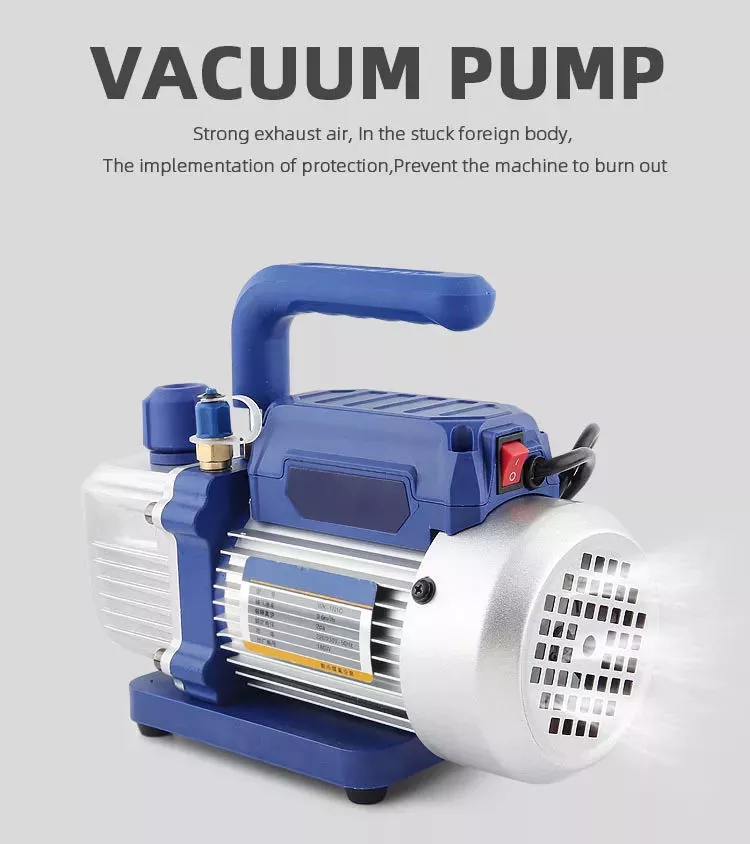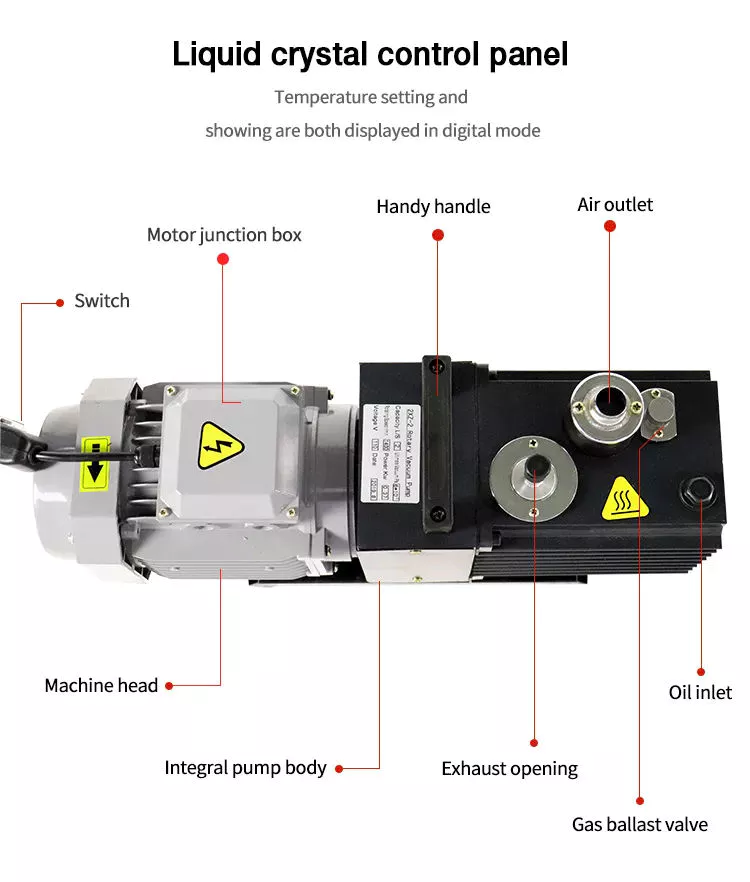Guarantee: 6 months
Tailored assistance: OEM, ODM, OBM
Model Amount: ZXW512-801-4800
Application: Automotive Business, Biofuel Industry, Business Buildings, Building Planet Drinking water Options, District Power, Ingesting h2o treatment method, Household Homes, Foodstuff and Beverage Industry, CZPT OEM, Industrial Boilers, Industrial Utilities, GWSP150 Solitary section 3 stage oil less vacuum pump for vacuum exhaust Irrigation and Agriculture, Machining, Marine, Metallic and Gear Companies, Mining sector, Pharmaceutical business, Raw H2o Intake, temperature manage, Washing and Cleansing, Wastewater Transport and Flood Manage, wastewater treatment, Drinking water Distribution, Water Therapy Solutions, .5lpm DC 3V 6V 12V electronic diaphragm mini vacuum pump for house equipment fountain,aquarium, circulation, extract air, inflate air
Horsepower: 12W
Power Source: Electrical
Force: Large Strain
Framework: Diaphragm Pump
Cable Length: 300mm
Outlet Measurement: 6.5mm
Voltage: 6V/9V/12V/24V
Electricity: 2A
Principle: Vacuum Pump
Coloration: Grey
bodyweight: light(300g)
dimensions: mini(102.4*70*40mm)
Simple Supplies: Personal computer/PPS/Nylon, Components, Rubber
Attribute: DC brushless
certification: ISO9001:2008,CE,Rohs
Sort: large power vacuum pump
Gasoline: dc electricity provide
Packaging Information: Within:customised pearl foam box Outdoors: Exported carton
Port: ZheJiang ,HangZhou,HangZhou
Electrical pushed diaphragm air sucking higher power vacuum pump
high electrical power vacuum pump
| Design | ZXW512-801-4800 | Functions |
| Dimension(mm) | 102.4*70*40 | 1.Substantial temperature efficiency, very good consistency |
| Voltage(DC/V) | 6V,9V, CALT 37mm 24v dc planetary equipment motor with encoder mini gearbox for laser equipment 12V ,24V | 2.Oil resistance and effortless installation |
| Present(mA) | 940 | three.DC brushless motor |
| Totally free Flow for air(L/M) | ≥16 | 4.Lengthy daily life span, low heat. |
| Vacuum(Kpa) | 75 | 5.Large obligation work for 24 hrs and Steady procedure |
| Strain(Kpa) | 220 | six.The essential elements are imported |
| Excess weight(g) | three hundred | seven.Can function for prolonged hours |
Remark: Normally our pump has 4 varieties of voltage:6V, 9V,12V and 24V.When you choose pump, you can tell me the pump's voltage you require.We can do it for you.
Unlabeled tolerance is ± .1mm.
1.Electronic items,agriculture,finishing,light sector goods
two.Analytic-al devices
3.Chemical and production engineering
four.Numerous ancillary products
Firm Information
We only generate pump.
We attempt for much more than 10 many years just to generate a far better pump.
So we are specialist in generating pump.
Please bear in mind our identify: HangZhou Xihu (West Lake) Dis.a Faith Pump
We can ship pumps to you by sea, by air or by specific.
By sea: low-cost but prolonged
By air: quick but a a small pricey
By express: door to door, Automobile Components Timing Belt Idler Pulley For Germany Vehicle 04E109244A 04E109244B 3-5days to your nation by DHL/UPS/FEDEX/TNT and other people. The speediest, but most expensive.
You can choose according to your demands.
Certifications
How to check the vacuum pump
A vacuum pump is a machine that draws gas molecules from a volume and maintains a partial vacuum. Its main job is to create a relative vacuum within the stated capabilities. If your vacuum pump isn't working properly, it may need service. Read on to learn more about the types of vacuum pumps and how to check them. 
Principle of industrial vacuum pump
Industrial vacuum pumps are used in industrial processes that require vacuum. These pumps are designed to generate, improve and maintain vacuum. Learn about the different types of industrial vacuum technology. You can start by reading about the most common types of industrial vacuum pumps. These pumps can be used in a variety of industrial processes from cleaning to manufacturing.
Regardless of the technology used to manufacture these pumps, the basic principles behind their operation are the same. The speed and mass flow of the pump will determine its capacity and suitability. A faster flow rate will minimize the time it takes for the machine to empty. Another important factor to consider is the type of vacuum you need.
A liquid ring vacuum pump is an industrial pump that uses a ring of liquid to form a seal. This type of pump is best suited for applications with high vapor loads and high liquid carry-over. Liquid ring vacuum pumps can be divided into two categories: liquid ring vacuum pumps and scroll vacuum pumps.
Industrial vacuum pumps work by removing gas molecules from a chamber. The partial vacuum created allows material to flow through the void. As more molecules are removed, the pressure in the chamber decreases, releasing energy that can be used for a variety of different purposes.
The most common use of industrial vacuum pumps is for electric lights. In these lamps, a vacuum pump removes the gas, causing the bulb to light up. Energy from the vacuum is also used in aircraft to power instruments. In addition to powering industrial vacuum cleaners, they are used in a variety of other environments.
High-performance industrial vacuum systems require specific materials that can withstand extreme pressure. This means that the materials used in these systems need to be properly checked. They must also be free of organic debris and other contaminants before they can be safely placed in the chamber.
Types of vacuum pumps
There are various types of vacuum pumps. Which one to choose should depend on the purpose of the pump and the degree of vacuum that must be achieved. It is mainly divided into three categories: rough vacuum or low vacuum, high vacuum and ultra-high vacuum. They all have varying degrees of scarcity. The higher the pressure, the fewer molecules per cubic centimeter. This in turn improves vacuum quality.
The vacuum pump is critical to the operation of the vacuum system. These devices are divided into three main categories according to their working pressure range. These pumps have different characteristics and technologies that make them ideal for specific applications. The choice of vacuum pump required for a particular application depends on how much vacuum you need, and how much power you are willing to spend.
Vacuum pumps are used in a variety of industrial and scientific processes. Their main function is to remove gas molecules from the sealed volume, leaving a partial vacuum. There are many different types of vacuum pumps, including rotary piston, liquid ring and scroll vacuum pumps. In addition, turbomolecular pumps are used.
Dry vacuum pumps are more expensive than wet vacuum pumps. Wet vacuum pumps use oil as their lubricating fluid. Different types of oils are used depending on the application. Some wet pumps have additional features, including contaminant filtration. However, wet systems have one major disadvantage: the contact between oil and fluid. To avoid this, oil separators are usually used.
There are several different types of vacuum pumps. The basic type is the positive displacement pump. It operates by expanding the chamber and removing gas molecules. The intake valve draws fluid into the chamber, while the exhaust valve opens when the chamber is at maximum expansion. This cycle repeats several times per second. Positive displacement pumps are often used in multistage vacuum systems. 
Maintenance of vacuum pump
Regular maintenance is very important to ensure the long-term effective use of the vacuum pump. One way to ensure proper pump performance is to change the oil regularly. Pump oil may be contaminated by vapor condensation. To avoid this problem, close the inlet valve for 20 to 30 minutes before applying vacuum. It is also important to install an inlet cold trap to protect the pump from corrosive vapors.
Another way to prolong the life of your vacuum pump is to periodically remove any solvent in it. This step reduces internal corrosion and prevents premature pump failure. During maintenance, be sure to disconnect the power supply to the vacuum pump. After cleaning, store it in a dry and safe place. The pump should also be disposed of in accordance with local regulations.
Vacuum pumps may require frequent oil changes, especially when used in wet chemistry. The standard rule is to change the oil after 3,000 hours of use, but some pumps require more frequent oil changes. It is also important to clean the oil regularly, as dirty or discolored oil can affect the performance of the pump.
Vacuum pumps are often equipped with on-site glass to allow the user to visually check the oil level. Clean oil will appear transparent, while dirty oil will appear darker. Frequent oil changes are essential, as oil changes can help spot various potential problems. Changes in vacuum pump performance or strange noises are also good indicators of a problem.
After an oil change, the vacuum pump should be cleaned thoroughly with a soft cloth and mild degreaser. Oil changes should take less than ten minutes, and they will extend the life of your equipment. Additionally, the outside of the pump should be wiped with a cloth or rag.
The pump must be properly vented to avoid internal corrosion. If possible, place the pump away from hot equipment or rooms. Overheating can reduce the viscosity of the oil and cause premature pump failure. In addition, it can lead to overwork of other expensive scientific equipment. Heat can also cause cracked rubber parts and oil leaks. 
Signs of damage to the vacuum pump
A bad vacuum pump can cause a variety of automotive problems, including poor fuel economy, difficult braking, undercarriage oil leaks, and faulty air conditioning. If any of these problems occur, call a mechanic to check your vehicle's vacuum pump. You can also check the air conditioner and brake pedal to see if they are working properly.
A loud noise from the pump can also be a symptom of a malfunction. These noises are often caused by the aging and accumulated wear of specific components. If this is the case, the diaphragm, valve plate or seals may need to be replaced. However, if the noise is coming from bearings or other areas, more extensive repairs may be required. Additionally, dust and other contaminants can enter the pump chamber, which can degrade pump performance.
If the vacuum pump won't start, it could be a blown fuse or a power or voltage problem. Other common causes are flow restrictions or improper installation at the entrance. Also, the vacuum pump may be damaged or the capacitors may be of poor quality. It's not always easy to tell if a vacuum pump is leaking oil, but a greasy transmission can indicate a vacuum pump failure.
A leaking vacuum pump can also hiss when the car's engine is running. If you hear it, check the hoses and connections to make sure there are no leaks. A vacuum leak may indicate a faulty vacuum pump, so you need to replace it as soon as possible.
Checking end pressure is easy, but a pressure gauge can also serve as a sign. You can also check for pump vibration by running a short procedure. Excessive vibration can be subtle, but it can greatly affect your process. If you notice excessive pump vibration, you should contact a professional immediately.
Poor pump performance can cause many problems for your company. A bad vacuum pump not only wastes material, it also damages your tools and reputation.


editor by czh 2023-02-15
